Top Photo: Crowds of French patriots line the Champs-Élysées to view Free French tanks and halftracks of General Philippe Leclerc's 2nd Armored Division pass through the Arc de Triomphe, after Paris was liberated on August 26, 1944. Among the crowd can be seen banners in support of General Charles de Gaulle. Courtesy US Library of Congress.
In August 1944, as the Allies gained the upper hand in the battle of France, Supreme Allied Commander General Dwight D. Eisenhower had to decide what to do about Paris. When the Allies invaded France on June 6, 1944, they intended to bypass the historic city. Engaging in a protracted urban battle in Paris would risk destruction of the city’s key historical and cultural sites, slow down the advance toward Germany, and require significant resources to secure and sustain the civilian population. Bypassing Paris and its garrison would leave the German soldiers in the city isolated, with no outside support and few options. From a military standpoint, liberating Paris offered no advantage to the Allies.
The French people, however, saw it differently. Despite the impending defeat of the Wehrmacht in France, the victory over Germany would not be complete until the capital of France was liberated and the Vichy government replaced. The taste of imminent victory led to labor strikes, attacks on Wehrmacht patrols, and, on August 14, a rebellion led by Communist resistance. Despite the rising violence and casualties, Paris police left their posts to join the rebellion the next day. General Charles de Gaulle, who arrived on the Continent on August 20, warned that a determined German effort would surely defeat the rebels. Moreover, he argued that the ongoing insurrection strengthened the French communists. Eisenhower realized they had to intervene: on August 22, he ordered General Omar Bradley, commander of the 12th US Army Group, to seize the city.
Bradley gave the mission to Major General Leonard T. Gerow, V Corps commander. As Eisenhower had promised de Gaulle, Free French forces would liberate the city; specifically, General Philippe François Marie Leclerc de Hauteclocque’s French 2nd Armored Division. Gerow assigned Major General Raymond O. Barton’s 4th Infantry Division the task of securing the Seine River crossings south of Paris while serving as a reserve for Leclerc’s forces. Barton’s division was already in a reserve status integrating replacements when he received his orders on August 23. That night, the division left its encampment at Carrouges in a steady downpour and headed toward Paris. By the evening of the 24th, Barton’s troops had occupied an assembly area about 40 miles southwest of the city, ready to move when ordered to do so.
Meanwhile, Leclerc’s advance into Paris quickly ran into trouble. Ignoring Gerow’s orders to enter the city from the west, Leclerc chose to attack from the south. He outran his artillery support before encountering the strongest portion of the German defense, making little progress. Roadblocks and ambushes chipped away at the French forces, and by the evening of August 24, Leclerc’s formations had suffered 300 casualties, with 35 tanks and 117 other vehicles destroyed. Gerow complained to Bradley, who was equally irritated by Leclerc’s behavior, ordering Barton to move past the French troops and enter the city from the southeast. Still, despite Leclerc’s slow progress, word moved quickly through the populace that the French 2nd Armored Division had entered the city, spreading joy among the long-suffering Parisians.
German resistance had been moderate so far, and largely unorganized. The commander of the German garrison, General Dietrich von Choltitz, had a respectable combat record and long military pedigree. Still, he knew that his small force of 20,000 had no chance against three million French citizens, especially now that Allied forces had entered the city. And, like the Allies, Choltitz did not desire to see Paris reduced to rubble. While reporting to his superiors on imaginary operations, Choltitz could do little more than hope for reinforcements that were not coming.
On the morning of August 25, the liberation gained momentum. Leclerc resumed the attack and, by 10:00 a.m., the French 2nd Armored Division was in the city, reducing strongpoints and taking increasing numbers of German prisoners. While French resistance fighters and police fired on enemy barricades and captured fleeing Germans, French infantry assaulted Choltitz’s headquarters in the early afternoon, taking the garrison commander prisoner. His captors took Choltitz to Leclerc at 3:00 p.m., where the men signed a formal surrender document. Paris was finally liberated after four long years of German occupation.
As word moved through the city of the German surrender, citizens sought their own justice against collaborators by conducting thousands of summary executions. Meanwhile, the military operation wound down, with 15,000 German prisoners of war captured in Paris and another 4,200 killed or wounded. The process of retribution and reconciliation would go on for years, but for now a celebratory mood took hold . De Gaulle entered the city in the late afternoon of August 25, declaring Paris liberated by the French while barely mentioning the Allied forces, which had lost 50,000 troops since June 6. As de Gaulle cemented his hold on the political leadership of France, GIs, French troops, and resistance fighters hunted the remaining snipers and holdout defenders around the city.
Despite his snubbing of the American effort in the city’s liberation, de Gaulle asked Eisenhower for two US divisions to remain in Paris to provide security and deal with any unexpected enemy activity, but the Supreme Commander was in no position to hold back such a large force with combat operations continuing east of the city. Regardless, he would not have placed American troops under French command. As a compromise, he diverted the US 28th Infantry Division through Paris on the way to the front so the troops could make a show of force while taking part in the Victory Parade on August 29. It was a grand spectacle, and a moment of celebration, but with the war waiting to the east, it was a fleeting moment.
-

American troops of the 28th Infantry Division parade down the Champs-Élysées, Paris. Courtesy US National Archives
-

American soldiers in Paris. Original caption: "We couldn't stick around long though. The Jerries were on the run and we wanted to keep them that way. The Tricolor flying from the Arc de Triomphe looked pretty good as we went through." Office of War Information Photo, OWI 36115. Paris, August 1944. Courtesy US National Archives.
-

General Philippe François Marie Leclerc de Hauteclocque, August 26, 1944. Creative Commons
-

General Charles de Gaulle speaks to the people of Cherbourg from the balcony of the City Hall during his visit to the French port city on August 20. Courtesy US National Archives
Additional Reading:
Rick Atkinson. The Guns at Last Light: The War in Western Europe, 1944-45. The Liberation Trilogy, v. 3. New York: Henry Holt, 2013.
Michael Neiberg, The Blood of Free Men: The Liberation of Paris, 1944. New York: Basic Books, 2012.
Mark T. Calhoun, PhD
Mark T. Calhoun, PhD, is a former Senior Historian at the Jenny Craig Institute for the Study of War and Democracy.
Cite this article:
MLA Citation:
APA Citation:
Chicago Style Citation:
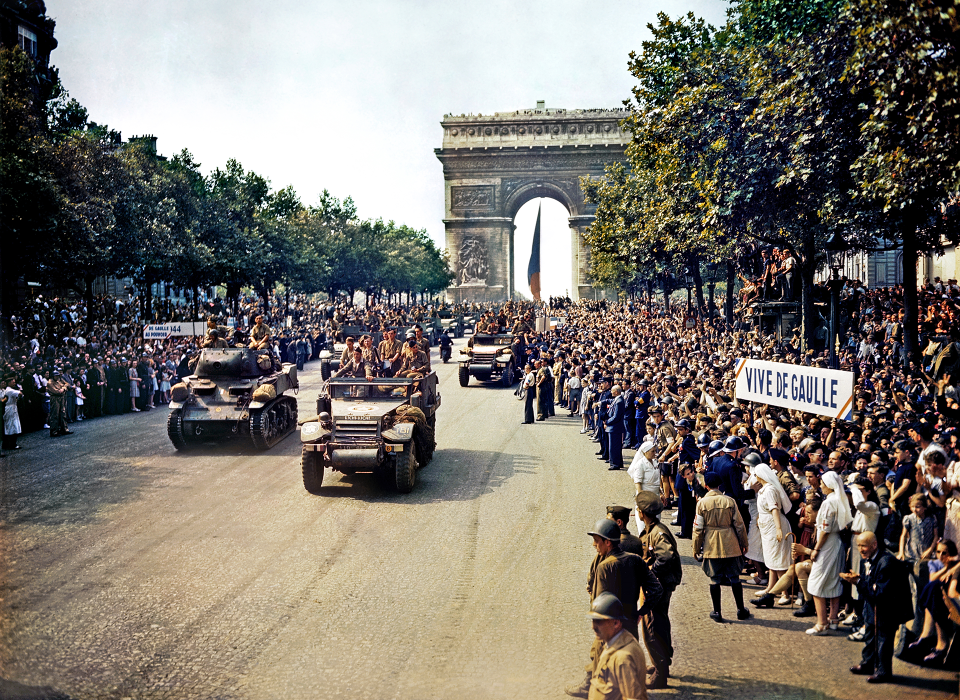

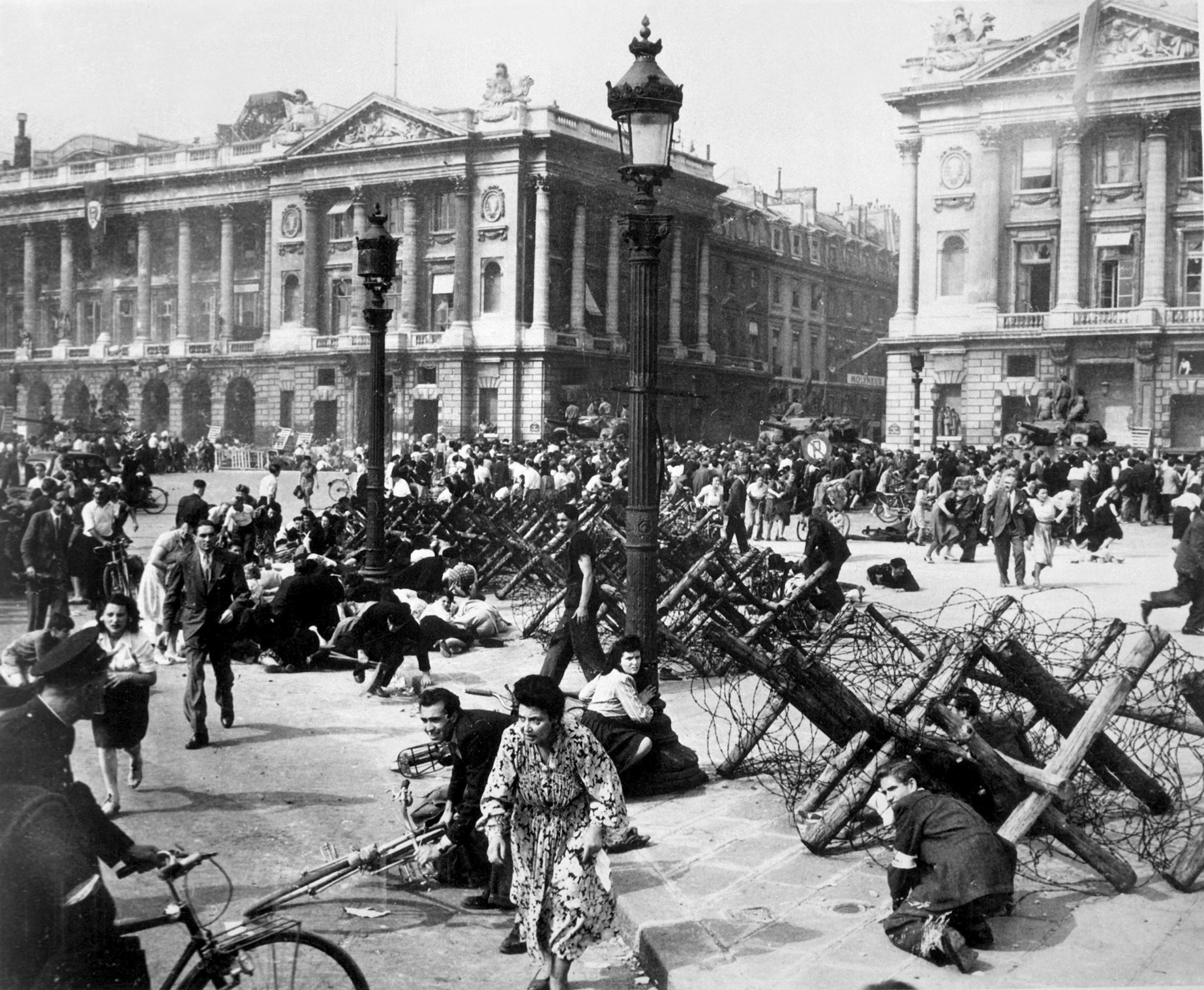
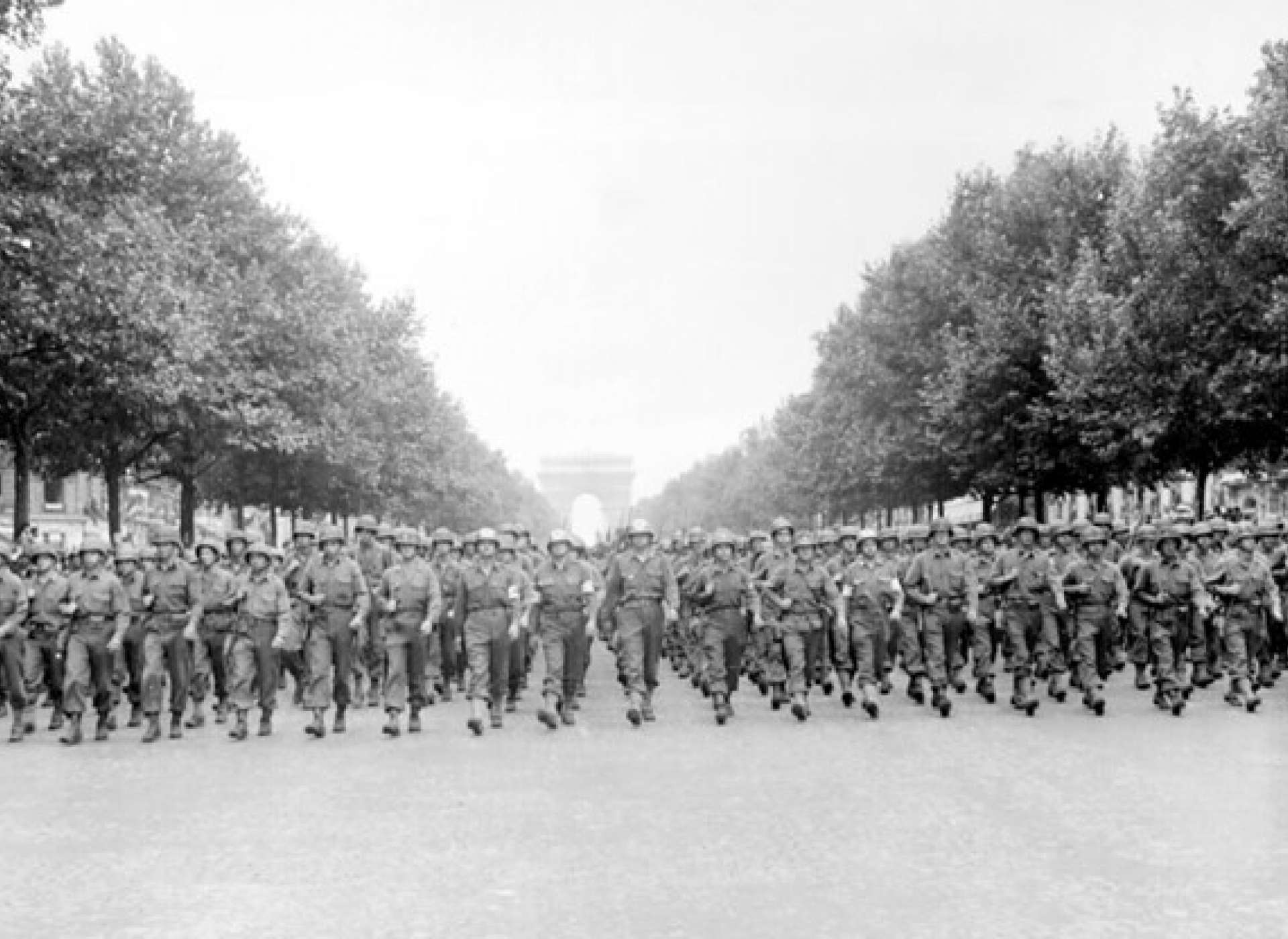
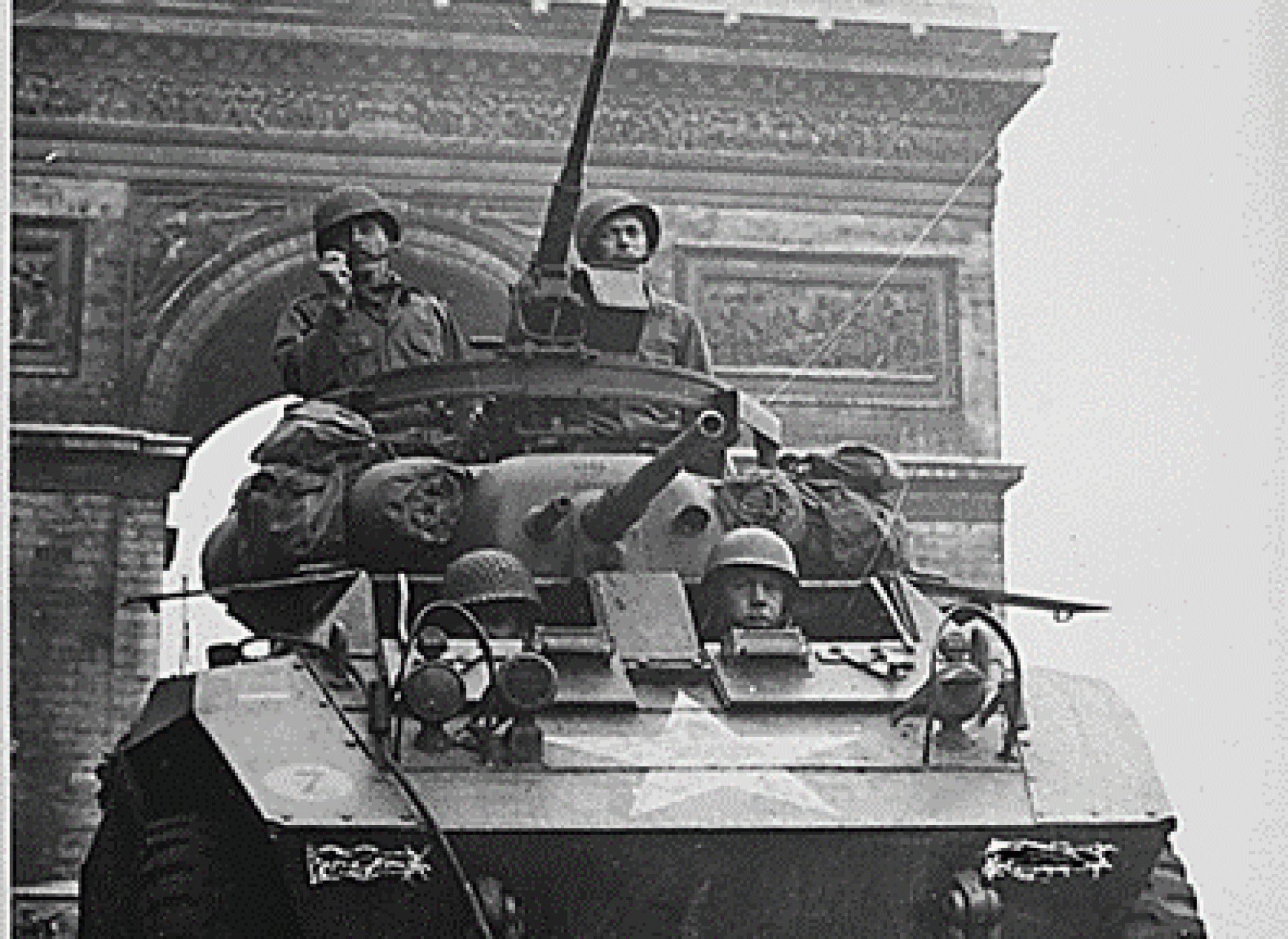
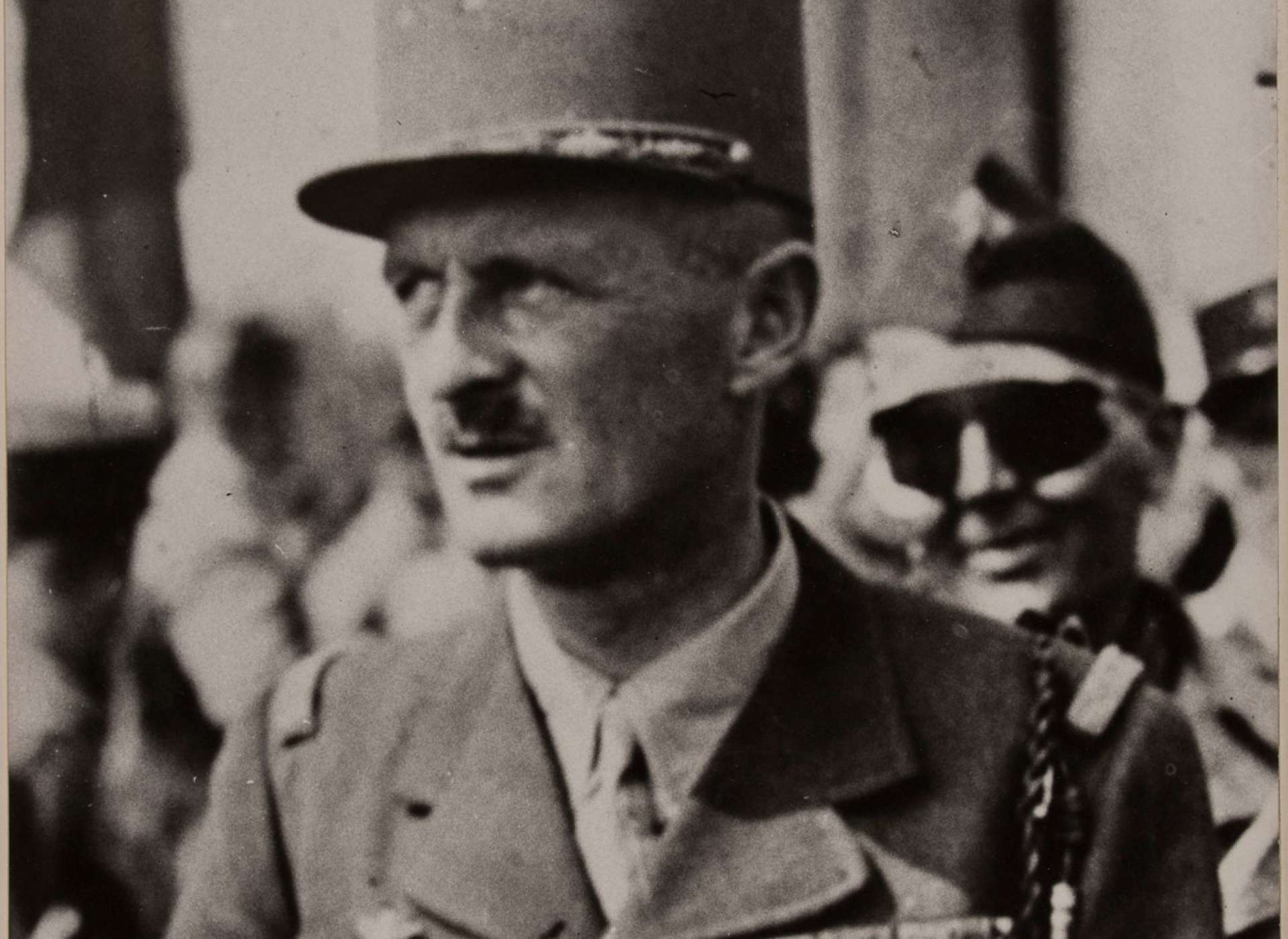
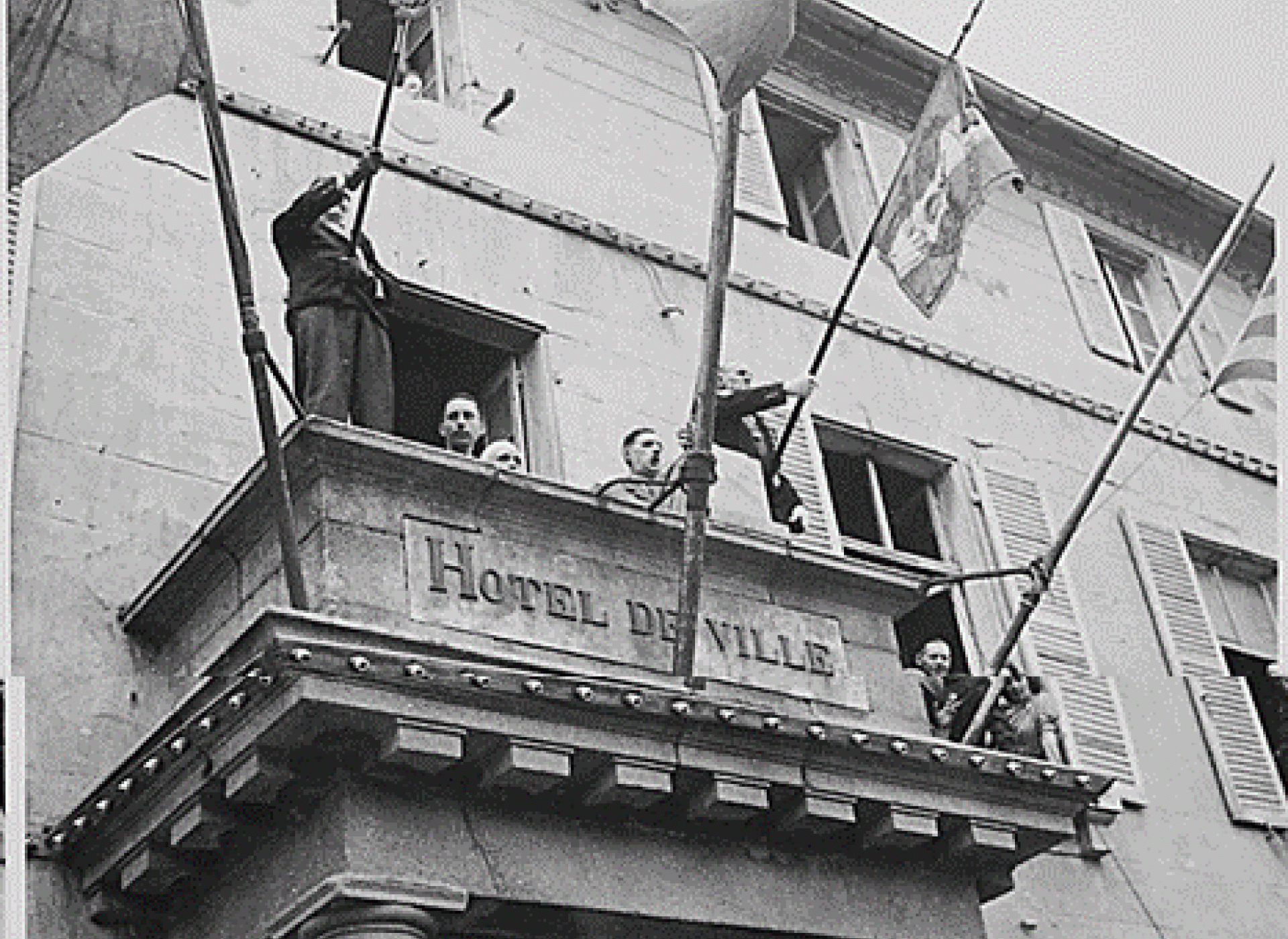
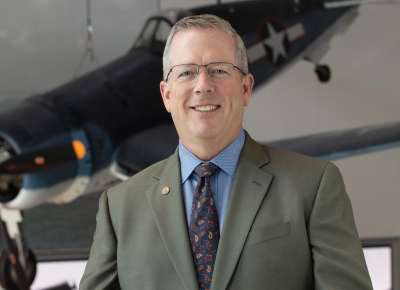
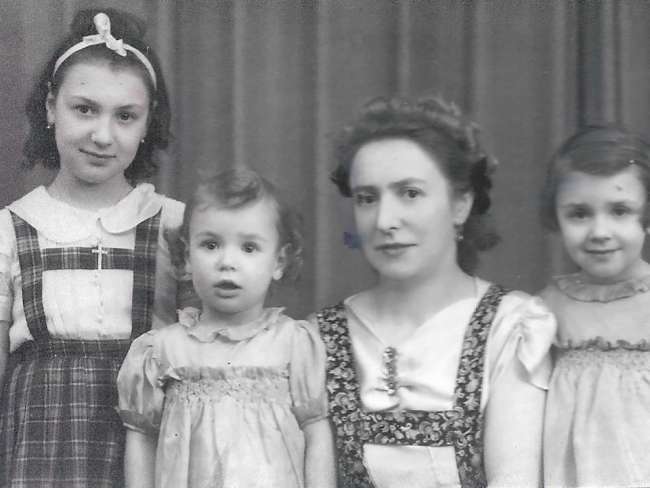



![Max Fuchs, New York City cantor, sings as Rabbi Sydney [sic] Lefkowitz, Richmond, VA, conducts the first Jewish services from Germany.](/sites/default/files/styles/max_650x650/public/2025-10/image1.jpg)



